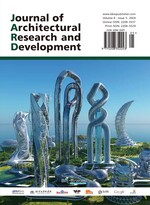Abstract
Against the backdrop of global climate change and China’s “dual carbon” goals, the green transformation of the construction industry is imperative, and completing the transformation requires many dual carbon talents to support it. This article focuses on the construction engineering technology major in higher vocational education. It explores in depth the specific requirements for construction engineering technology talents in terms of professional knowledge, vocational skills, and literacy under the dual carbon mode. Based on this, corresponding dual carbon talent training courses are proposed, aiming to provide theoretical support and practical guidance for cultivating high-quality dual carbon talents that meet the needs of the new era.
References
Liu L, Wu S, Geng S, 2024, Strategies and Development Paths for the Construction Industry under the Background of “Dual Carbon”. Chinese Environment, 2024(01): 39–41.
Liu T, 2022, Research on the Collaborative Innovation of Engineering Vocational Talents Training Model between Government, Administration, School and Enterprise under the Background of “Dual Carbon”. Technological Perspective, 2022(17): 56–59.
Sun X, Jia N, 2024, Research on Energy saving Renovation Technology of Buildings under the Background of Dual Carbon: Taking the Science and Technology Building Project of a University in Xuzhou as an Example. Urban Architecture, 2024(21): 16–20.
Hu H, Wang J, Wei H, 2024, Applicability Analysis of Carbon Emission Calculation Methods in Construction Stage of Building Engineering. Green Buildings, 2024(16): 02–08.
Yan Y, 2015, The Application of Project Driven Teaching Method in Classroom Teaching of Vocational and Technical Colleges. Education and Career, 2015(05): 77–80.
